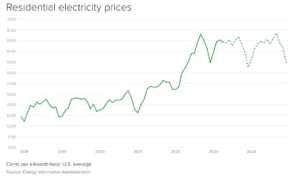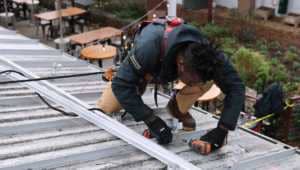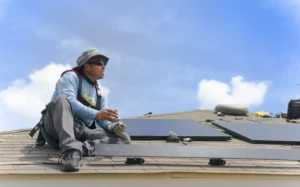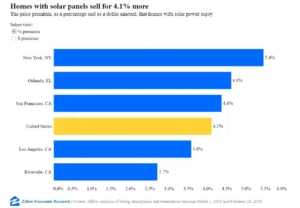Going solar is too expensive!
The first solar myth commonly spread is that solar is too costly. However, electric energy costs are steadily rising and are more expensive than investing in solar when comparing long-term costs. Going solar is hedging against inflation rates and rising electric utility costs by having a sustainable and fixed electric energy cost for the next 25+ years. So while electric utility prices rise, solar panel investments remain the same as solar owners typically either pay cash or have a fixed financed cost for their investment.
Additionally, depending on Texas’ grid conditions, homeowners with solar-battery systems can earn electric utility credits with the surplus solar-produced energy they export to the grid. These types of incentives such as net-metering buyback programs make it more affordable for consumers to invest in solar, and therefore save more money in the long-term compared to standard electric grid utility costs. Tesla’s new electric utility plan allows Powerwall owners to sell their stored surplus solar energy at a premium when ERCOT activates energy conservation alerts and/or when grid energy demand is high.

Solar panels damage the roof!
This solar myth could not be more wrong! Solar mounting systems are engineered to protect the roof and panels for 25+ years. Solar equipment manufactures are required to have UL ratings and listing, which ensure reliability and safety for their use and installation. This is why it is important to work with a reputable installation company using UL rated equipment that they can therefore provide labor workmanship & roof warranties for a minimum of 2-5 years. Choosing a solar company that offers high-quality workmanship and accountability for its services and products will ensure that the roof is properly protected. It is also a best practice to include newly installed solar systems on the home’s insurance policy. Therefore, should a severe storm damage the roof and/or panels, insurance covers the replacement and repairs.


Solar panels require a lot of maintenance.
Solar panels require less maintenance compared to many other household utility products. The equipment is covered between 25-30 years under the manufacturer’s warranty for performance. The main maintenance outside of manufacturer’s warranty involve periodic cleaning of the solar panels. Keeping solar panels clean is essential for optimum energy production performance and efficiency. Typically a good rain storm will clean most soot and debris on panels. However, depending on environmental factors such as surrounding trees, dirt roads, or construction can affect how often panels will need to be cleaned. Many solar systems have performance monitoring options available. Enphase’s Enlighten app, allows users to see how each solar panel is performing or if any maintenance is required. This can be extremely useful for determining when to clean panels.
Solar will negatively affect the sale of my home.
This solar myth could not be more incorrect! When designed and engineered properly, solar equipment will actually increase the overall value of the home. Working with a high-quality elite solar installation company will ensure that the solar system on the house will be properly apprised by a certifying 3rd party appraiser such as Pearl Certification. High-performing energy-efficient homes are appraised at a much higher value compared to houses that aren’t. Therefore, when selling a home with a quality solar system the sellers are getting the most out of their investment.

Solar is a one size fits all.
Solar systems are not a one size fits all product or service. Every household is different and requires a full detailed analysis of the household’s energy profile. This how solar-battery systems can be properly engineered to meet the energy needs of the household. Engineers will conduct energy calculations and render 3D models. To make sure they’re accurate, they use the homeowner’s past 12 months of electric bills and household appliance ratings, along with drone & satellite data. By using the data obtained from the home, solar can be customized to the requirements of the homeowners.

Fact checked by Jacob Petrosky – 4/26/2024
